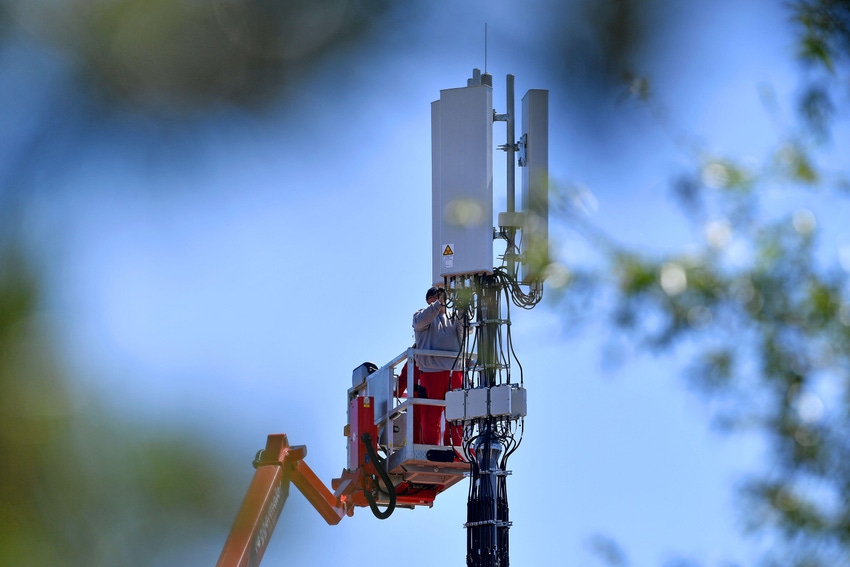The FWA wait for 6GHz may soon be over
The FCC is expected to soon open the 6GHz band for unlicensed fixed wireless access (FWA) services. Smaller FWA providers like Nextlink would likely cheer the move. But big 5G operators may also benefit.

The 6GHz band may soon be opened for unlicensed fixed wireless access (FWA) services, according to those in the industry. The move could add a significant amount of fresh spectrum to a market that has been growing by leaps and bounds.
The action would also bring to an end years of waiting. Many in the industry expected the FCC to release the band for FWA operations last year. That didn't happen.
Moreover, the issue could have a significant impact on the broader market for telecom services in the US. That's because the 6GHz band might also be used to create backhaul links for fiber networks in rural areas, including those funded by the US government's $42 billion Broadband Equity Access and Deployment (BEAD) program.
But there's an ongoing debate in the industry over interference. AT&T continues to express concerns that FWA operations in 6GHz spectrum may interfere with its existing operations in that band. How the FCC might address those concerns is not clear.
In the meantime, the waiting continues.
Hopes for action
Peter Smith, the CEO of wireless backhaul provider Aviat Networks, said during his company's recent quarterly conference call that the 6GHz band could be opened up in March.
"We think that when that comes, [when] that unlicensed broadband service comes in, it will pave the way for more lightweight backhaul, and we think that's going to have a positive effect on both RDOF and BEAD appropriations," he said, according to Seeking Alpha.
BEAD and the FCC's Rural Digital Opportunity Fund (RDOF) are both funneling money into the construction of telecom networks in rural areas. Those networks sometimes connect wired networks in rural areas to the nation's bigger fiber Internet backbone by using wireless backhaul links. If the FCC opens the 6GHz band for higher-power, outdoor operations, those backhaul links could then run in the band.
But wireless backhaul isn't the only application that could run in the 6GHz band. FWA service providers like Nextlink and Resound Networks, alongside FWA vendors like Tarana and Cambium, are also eyeing the band for fixed wireless services.
For example, Resound recently said that Airspan's 6GHz FWA products could support 1 Gbit/s download and 500 Mbit/s upload speeds across distances up to three miles.
The question of interference
But there are existing operations in the 6GHz band that will need to be protected from new outdoor operations, including FWA. Automated Frequency Coordination (AFC) systems are expected to provide that protection. Such systems are intended to coordinate 6GHz spectrum among multiple users, including existing 6GHz users already using the band for cell site backhaul or radio astronomy. Commercial communications in the 3.5GHz CBRS band operate in a similar manner.
But AT&T has long worried over the parameters of that interference protection. Indeed, the company took the FCC to court over the issue in 2021, warning that it operates thousands of wireless backhaul links in the 6GHz band.
In a filing to the FCC in late 2023, AT&T again raised concerns about the issue. "Reasonable engineers may differ about the reasonable way to implement certain propagation calculations, and approved AFC system operators should not have unconstrained, purely unilateral authority to make such [interference mitigation] decisions going forward," the company wrote. "This gap poses a risk to the stability of the AFC co-existence network."
In response, a group of companies including Qualcomm, Broadcom, Federated Wireless and the Wireless Broadband Alliance wrote that they "are committed to establishing a centralized means to receive and address complaints regarding purported harmful interference from AFC-authorized unlicensed operations."
They also urged the FCC to open up the 6GHz band "as soon as possible so that we may begin operations and enable standard-power operations for American enterprises and consumers."
An ongoing debate
In 2020, the FCC allocated the entire 6GHz band to unlicensed operations like Wi-Fi. Those operations could include both indoor and outdoor operations.
Commercial unlicensed indoor operations are already allowed in the band. That means home Wi-Fi access points can use the 6GHz band today. But commercial outdoor operations – including unlicensed fixed wireless services – will be governed by AFC systems and are not yet authorized by the FCC.
At the end of 2022, the FCC approved more than a dozen 6GHz AFC database operators including Broadcom, Google, Comsearch, Sony, Kyrio, Key Bridge Wireless, Nokia, Federated Wireless, Qualcomm and others. In 2023, the agency oversaw a number of AFC tests across the country. AT&T also participated in those tests.
If the FCC does release the 6GHz band for commercial FWA services, the move would represent a boon to smaller FWA operators like Nextlink, Sail Internet, Bolt Internet and Speed of Light Broadband. Such operators generally run their FWA systems through spectrum bands stretching from 5GHz to 3.5GHz. And they're keen to obtain more unlicensed spectrum for their operations because wireless network performance is directly related to the amount of spectrum an operator deploys – the more spectrum, the better the performance.
The 5G angle
But the 6GHz band could also impact big 5G network operators like T-Mobile and AT&T that primarily use licensed spectrum.
Today, the FWA services from Verizon, T-Mobile and AT&T mostly run through their licensed spectrum holdings, like the 2.5GHz band or the C-band.
By using those spectrum bands, T-Mobile and Verizon have managed to dominate the US broadband market for more than a year now.
But there's also a chance they could expand their licensed FWA operations into the unlicensed 6GHz band. Indeed, AT&T told the FCC in 2021 it may want to test 5G NR-U technology working in the unlicensed 6GHz band. And in 2022, T-Mobile asked for FCC permission to test Wi-Fi and FWA in the 6GHz band.
5G interest in the 6GHz band comes as no surprise. Last year, global spectrum regulators agreed to support both licensed and unlicensed operations in the 6GHz band on a global basis, depending on what local regulators decide. That potentially paves the way for 5G network operators in Europe and elsewhere to obtain spectrum in the 6GHz band on a licensed basis. In the US, though, the band remains open only to unlicensed operations.
About the Author(s)
You May Also Like


.jpg?width=300&auto=webp&quality=80&disable=upscale)









